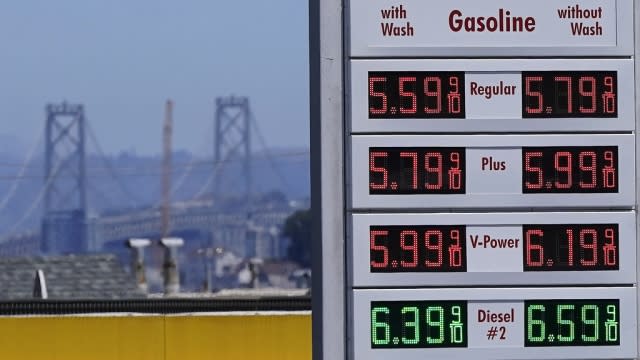Global oil prices could influence Central Bank's interest rate calls

The takeaway from Federal Reserve Chair Jerome Powell, who announced a pause in interest rate hikes Wednesday, was cautious optimism, with the lending rate sticking between 5.25% and 5.5% — a 22-year high.
Economists had predicted the pause, as the Fed gradually moves toward its goal of 2% annual inflation.
The more deliberative approach follows the 11 rate hikes the Central Bank unleashed beginning in March 2022, but the Fed is "proceeding carefully."
"We're prepared to raise rates further if appropriate, and we intend to hold policy at restrictive level until we're confident that inflation is moving down sustainably toward our objective," Powell said.
The Fed looks at prices across the economy, and one indicator that has an effect is the cost of energy. While oil and gas are commodities and have volatile changes in price, they have an effect.
SEE MORE: Fed leaves rates unchanged as it eyes potential 'soft landing'
The cartel that basically has the heaviest hand in oil production and prices is OPEC, led by the influence of the Saudi Arabian government.
Experts say the Saudi oil ministry has consistently cut production in the last several years, and analysts say the effect has been to prop up prices.
"These are the most productive wells in the world, in the global oil market, and so as we see this number decline or stay down for such a long period of time, we can anticipate less production, therefore less oil getting to the global market," said Ed Hirs, energy fellow at the University of Houston.
Meantime, Bankrate analyst Ted Rossman says while inflation is slowly coming down, that doesn't mean consumers will see relief at the pump anytime soon.
"Now that oil and gas prices are going up, that's a headwind for this inflation fight," Rossman said. "I mean, that's actually one of the, kind of, flies in the ointment here that could lead the Fed to maybe raise rates again later this year."
According to AAA, regular unleaded gas prices have skyrocketed, with the national average hitting $3.87 a gallon on Tuesday. That's among the highest prices seen since October of last year ,but still well below the peak of June 2022, when the national average was over $5 a gallon.
The Fed also left fresh projections, indicating that at least one more rate hike is still possible this year with two potential cuts coming in 2024.
Powell's takeaway is that the economy is staying resilient, staving off recession fears by predicting slower inflation, lower unemployment and more economic growth.
